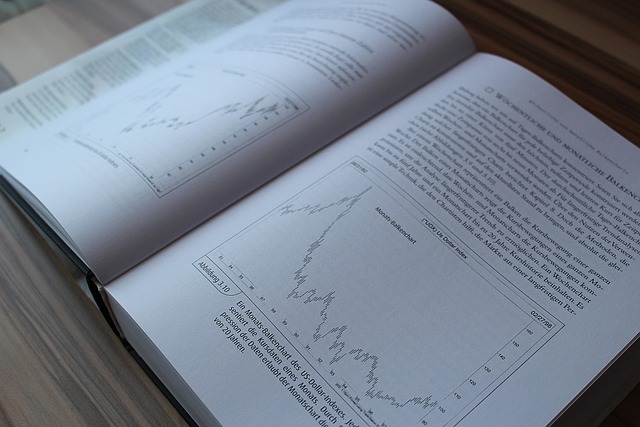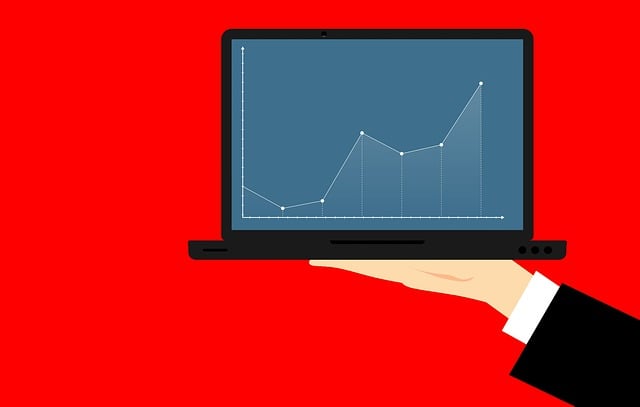Is Binance a Good Trading Platform in 2025? Pros, Cons & Guide
Author: Jameson Richman Expert
Published On: 2025-10-29
Prepared by Jameson Richman and our team of experts with over a decade of experience in cryptocurrency and digital asset analysis. Learn more about us.
Is Binance a good trading platform is one of the most-searched questions among new and experienced crypto traders heading into 2025. This in-depth guide evaluates Binance across security, fees, features, liquidity, customer support, regulation and mobile usability so you can decide whether it fits your goals. The article also compares alternatives, offers actionable setup and risk-management steps, and links to practical resources for trading signals, mobile trading guides and copy-trading strategies.

Quick summary
Binance remains one of the largest and most feature-rich cryptocurrency platforms worldwide, with deep liquidity and a wide product suite that includes spot markets, futures, margin, staking, savings and NFTs. That breadth makes it attractive for active traders and advanced users, but regulatory complexity and support complaints mean it’s not perfect for everyone. Use the sections below to evaluate whether Binance is a good fit for your trading style, risk tolerance and jurisdiction.
What we’ll cover
- Binance at a glance: size, market position and product range
- Pros and cons of using Binance for trading
- Fees, order types, liquidity and user experience
- Security and regulatory considerations
- How to use Binance safely (step-by-step)
- Alternatives and when to choose them (MEXC, Bitget, Bybit and others)
- Actionable checklist and FAQ
1. Binance at a glance
Binance launched in 2017 and quickly became the largest cryptocurrency exchange by trading volume. For an overview of the company and history, see the Binance page on Wikipedia (Binance). Today Binance supports thousands of trading pairs, fiat on-ramps in many regions, a global derivatives ecosystem, staking and savings products, an advanced API, and native mobile and desktop apps.
Key strengths
- Large selection of assets and trading pairs
- High liquidity for major pairs (tight spreads)
- Advanced order types, charting and derivatives
- Competitive maker/taker fee structure with discounts for BNB-holders
- Strong developer ecosystem and APIs
Key limitations
- Regulatory scrutiny in several jurisdictions
- Customer support response times can vary
- Complex product suite can be overwhelming for beginners

2. Is Binance a good trading platform? Pros and cons
Pros
- Liquidity and execution: For top crypto pairs like BTC/USDT and ETH/USDT, Binance usually offers deep order books and tight spreads—important for traders executing large orders or scalping.
- Product breadth: Spot, margin, perpetual futures, options, staking, savings, Launchpad and an NFT marketplace—everything under one roof.
- Low fees: Competitive maker/taker fees and regular discounts (e.g., holding BNB reduces fees).
- Advanced tools: Charting, multiple order types (limit, market, stop-limit, OCO), and a robust API for algorithmic traders.
- Mobile and desktop apps: Full-featured apps that let you trade on the go. For a mobile-specific guide, see this detailed How to Use Binance App for Trading — Complete Mobile Trading Guide.
Cons
- Regulation and restrictions: Binance’s operations have been subject to regulatory actions in multiple countries, leading to feature restrictions by jurisdiction. Check local rules before signing up.
- Customer support: Users sometimes report slow or inconsistent customer service experiences, particularly for complex dispute resolutions.
- Complexity for beginners: The sheer number of products can confuse new users and increase risk if advanced features (like margin or futures) are used without sufficient knowledge.
3. Fees, spreads, and costs — practical view
Fees are a major factor when deciding if Binance is a good trading platform. Binance typically offers one of the lower fee schedules among major exchanges, but total cost depends on trade frequency, order sizes, whether you use BNB for fee discounts, and which product (spot vs futures) you use.
- Spot trading fees: Tiered maker/taker model—higher VIP tiers and BNB holdings reduce fees.
- Futures fees: Competitive relative to other derivatives platforms, but funding rates and leverage risks increase costs when positions are held long.
- Deposit/withdrawal costs: Vary by coin and blockchain network. Fiat deposits/withdrawals may include third-party fees or banking fees.
Actionable tip: Always check the live fee schedule in your account and calculate total round-trip costs (fees + spread) for your typical trade size before committing. If your strategy relies on tiny spreads (scalping), even small fee differences can matter.
4. Security and custodial risk
Security is critical when answering “is Binance a good trading platform?” Binance invests heavily in security infrastructure (cold wallets, multi-signature, hot wallet monitoring) and has an emergency insurance fund (SAFU) designed to protect users in extreme cases. However, centralized exchanges carry custodial risk: if the exchange is compromised, users’ on-exchange assets can be impacted.
Security best practices
- Enable two-factor authentication (2FA) — preferably via an authenticator app (Google Authenticator/Authenticator).
- Use anti-phishing codes and strong unique passwords.
- Keep only active trading funds on exchange; store long-term holdings in hardware wallets.
- Monitor account activity and withdraw funds after major trades if not actively trading.
For more on how to use external trading signals safely, see this guide to using BTC trading signals that includes risk management tips: BTC Trading Signals — The Ultimate Guide.

5. Regulation and legal considerations
Binance operates globally but faces regulatory scrutiny in many countries. Some national regulators have issued warnings or required changes to the platform. As regulatory environments evolve into 2025, you should:
- Confirm which Binance products are available in your jurisdiction.
- Understand KYC/AML requirements and document submission processes.
- Keep an eye on updates from official regulators (e.g., FCA, SEC-equivalent notices) to remain compliant.
Regulatory uncertainty doesn't necessarily mean Binance isn't a good platform — it means you must ensure your account and trading activities comply with local laws and that you're prepared for potential product access changes.
6. Trading features and tools
Binance’s advanced features are a major reason experienced traders ask “is Binance a good trading platform?” Key tool areas:
Order types and charting
- Limit, market, stop-limit, stop-market, trailing stop orders and OCO (one-cancels-other).
- Advanced charting integrated with TradingView on the web UI — useful for technical analysis.
If you use TradingView and need quick actions like disabling indicators to declutter charts, here’s a practical guide: TradingView: Turn Off Indicators — Quick Practical Guide.
API and algo trading
Binance provides a mature API for programmatic trading. Algorithmic traders benefit from fast market data and order endpoints. Make sure to apply best practices for API key security and rate limits.
Signals, bots and copy trading
Binance supports spot/futures bots via third-party integrations and offers features that enable social trading strategies. If you’re evaluating copy trading alternatives or social trading, consider comparing MEXC’s copy trading platform for 2025: MEXC Copy Trading App 2025 — The Ultimate Guide.
7. Mobile experience — trading on the go
Mobile access matters for many traders. Binance’s mobile app supports almost all desktop features including spot, futures, stop orders, and advanced charting. If you prefer a step-by-step walkthrough to get started and trade from your phone, check this guide: How to Use Binance App for Trading — Complete Mobile Trading Guide.

8. Liquidity, slippage and market depth
Liquidity is a key criterion when evaluating 'is Binance a good trading platform'—high liquidity reduces slippage and improves execution for large orders. Binance is generally deep for major pairs (BTC, ETH, top stablecoins). For niche altcoins, liquidity varies.
Actionable example: If you plan to buy $50,000 of BTC, review the order book depth and simulate the execution using Binance’s order book on the interface. Look at the cumulative bids/asks to estimate expected slippage.
9. Derivatives, leverage and risks
Binance offers leveraged products (margin and perpetual futures). These amplify gains and losses. Relevant considerations:
- Understand maintenance margin and liquidation mechanics.
- Start with small leverage until you’re familiar with funding rates and volatility.
- Keep position sizes in line with your overall risk limits.
If you’re assessing derivatives volume, platforms like Bitget also provide transparent reporting; learn how to check trading volume and use that when comparing exchanges: Bitget — Check Trading Volume Guide for 2025.
10. Alternatives: When to choose another platform
Binance is strong, but alternatives may be preferable based on needs:
MEXC
If you want social trading and copy-trading features, MEXC’s copy trading product is worth exploring. Read the guide here: MEXC Copy Trading App — 2025 Guide. To test MEXC, you can register using this invite: Register on MEXC.
Bitget
Bitget emphasizes derivatives and copy trading with strong liquidity on futures for some pairs. For volume transparency and analytics, see the Bitget guide above. Sign up for Bitget here: Register on Bitget.
Bybit
Bybit is often preferred for derivatives traders focused on low-latency futures execution and strong customer service. If you want to compare, register here: Register on Bybit.
Other choices
- Centralized regional exchanges (better local fiat support/custody rules)
- Decentralized exchanges (DEX) for non-custodial trading, albeit with different UX and liquidity considerations
- Brokerage-style platforms if you prefer an easier fiat on-ramp and customer support

11. Practical steps: How to decide if Binance is right for you
- Define your trading goals: Are you an active day trader, long-term HODLer, or occasional investor?
- Assess necessary features: Do you need margin/futures, staking, staking rewards, or advanced API access?
- Check jurisdictional availability: Confirm Binance product availability in your country and KYC requirements.
- Compare fees: Use your expected trade volume to model fee tiers and discounts (BNB, VIP tiers).
- Test execution: Open a small account and execute live trades to measure slippage and UX.
- Security plan: Decide how much to keep on-exchange vs cold storage and enable 2FA and other protections.
12. How to set up and trade safely on Binance — step-by-step
Follow these steps when you choose Binance as your platform:
- Create an account — register at the official Binance registration page: Register on Binance.
- Complete KYC — submit ID and proof of address if required for fiat and higher withdrawal limits.
- Secure your account — enable 2FA, set withdrawal whitelist, and turn on anti-phishing codes.
- Verify fee discounts — see if holding BNB or reaching VIP tiers reduces fees for your trading volume.
- Start small — place small spot trades first, then explore order types and the testnet or low-leverage futures if needed.
- Withdraw long-term holdings — move assets you intend to hold for months/years to hardware wallets or cold storage.
13. Using external resources to improve trading outcomes
Combining Binance’s execution with quality signals and analysis can improve decision-making, but always apply risk management. Recommended resources:
- Trading signals and community insights: BTC Trading Signals — Ultimate Guide.
- Charting tips and TradingView management: How to turn off indicators in TradingView.
- Mobile trading how-to: Complete Mobile Trading Guide for Binance.

14. Examples and use cases
Example 1: Active day trader
Scenario: Daily volume $10k–$200k, strategy relies on tight spreads and fast order execution.
- Why Binance: Tight spreads and advanced order types make it a strong choice.
- Actionable setup: Use low-latency API keys, enable fee discounts, and test execution slippage before scaling positions.
Example 2: Long-term HODL investor
Scenario: Buys top-tier assets monthly and holds for 1+ years.
- Why Binance: Easy fiat on-ramp and low spot fees are convenient.
- But: Consider withdrawing to a hardware wallet for custody of long-term holdings.
Example 3: Leveraged futures trader
Scenario: Uses up to 10x leverage on BTC and ETH perpetuals.
- Why Binance: Large derivatives liquidity and multiple margin methods.
- Risks: Understand funding rates, liquidation risks and the cost of carry. Start small and use stop-loss orders.
15. FAQ — quick answers
Q: Is Binance safe?
A: Binance invests heavily in security and has SAFU funds, but as a centralized exchange it carries custodial risk. Use 2FA, withdraw long-term assets to cold wallets, and follow best practices.
Q: Are Binance fees low?
A: Generally yes—Binance is competitive, especially if you use BNB for fee reductions or qualify for VIP tiers. Calculate fees based on your typical trade sizes.
Q: Can I trade derivatives on Binance?
A: Yes. Binance offers futures, options and margin. Be aware of leverage risks and ensure you understand the product mechanics.
Q: Are there better alternatives?
A: Alternatives depend on needs: MEXC for copy trading (MEXC guide), Bitget for derivatives analytics (Bitget volume guide), Bybit for low-latency futures. Consider local exchanges for fiat options.
16. Checklist before you commit
- Confirm services and limits in your country.
- Compare fee scenarios against your trading frequency.
- Test platform execution with a small allocation.
- Draft a security plan: 2FA, whitelists, cold storage.
- Set loss limits and position-size rules before using leverage.

17. Final verdict — is Binance a good trading platform?
Short answer: For many active and advanced traders, Binance is a good trading platform thanks to its liquidity, product breadth and competitive fees. For beginners or users in tightly regulated jurisdictions, the complexity and evolving compliance measures mean alternative platforms or stricter risk controls may be preferable. Your final decision should account for your trading style, risk tolerance, regulatory environment and willingness to manage security.
If you decide to use Binance, start small, secure your account, and integrate trusted resources and guides to improve outcomes. If you’re exploring social or copy trading, consider MEXC or platforms that emphasize that feature set. To test other exchanges, use these invite links: MEXC, Bitget, Bybit, or register directly on Binance: Binance registration.
18. Additional authoritative resources
- Binance — Wikipedia
- What is a Cryptocurrency Exchange? — Investopedia
- Consumer Financial Protection Bureau — Cryptocurrency FAQs
19. Useful guides from CryptoTradeSignals
Complement your Binance learning with hands-on guides and tools:
- BTC Trading Signals — Ultimate Guide (Signals, risk controls)
- TradingView — Turn Off Indicators (chart hygiene)
- How to Use the Binance App — Mobile Trading Guide
- MEXC Copy Trading App — 2025 Guide
- Bitget — Check Trading Volume Guide for 2025

Conclusion
Deciding whether Binance is a good trading platform comes down to matching your trading needs with the platform’s strengths and weaknesses. Binance is powerful, liquid and cost-effective for many traders, but it requires active security practices and awareness of regulatory changes. Use the practical steps and resources in this guide to test the platform safely, compare alternatives, and implement a trading plan that fits your objectives in 2025.
Disclaimer: This article is for informational purposes and does not constitute financial or legal advice. Always perform your own research and consider consulting a licensed professional before trading cryptocurrencies.